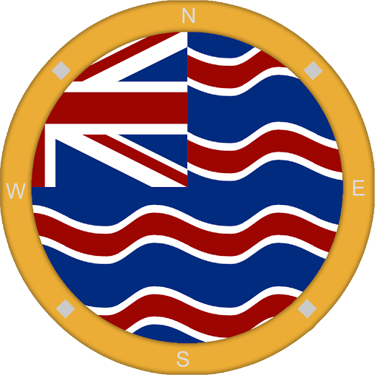Chagos Islands: A vital cog in the WW2 Allied supply chain
Chagossians lived side-by-side with the war effort, they continued their plantation work, but the presence of military personnel and passing ships reminded them that their homeland was no longer just a remote community - it was a vital part of the Allied supply chain.
NEWS FROM THE OVERSEAS TERRITORIESRESEARCHBRITISH INDIAN OCEAN TERRITORY
When most people think of World War II, they picture the beaches of Normandy, the skies over Britain, or the jungles of Burma. Few imagine a remote atoll in the middle of the Indian Ocean. Yet Diego Garcia, part of the Chagos Islands, played a quiet but strategic role in the Allied war effort - a role largely forgotten today.
Diego Garcia was then a small plantation community, home to the Chagossians who worked the coconut groves and lived in villages along the lagoon. But its location - halfway between Africa and Asia - made it invaluable to the British Admiralty. In 1941, as Japanese expansion threatened the Indian Ocean, Diego Garcia was designated a “secret anchorage.”
The plan was simple: if Allied ships needed to refuel, resupply, or hide from enemy raiders, Diego Garcia would be ready. Coastal defence guns were earmarked for installation, and a small garrison was prepared to be sent from British Mauritius or India.
In 1942, a detachment of RAF personnel arrived from Colombo to set up a wireless transmitter. Their job was to coordinate with Catalina flying boats patrolling for Japanese submarines. Chagossians recalled the sudden arrival of uniformed men and strange equipment, a reminder that their islands were now part of a global war.
Allied ships moving between East Africa, India, and Australia sometimes stopped at Diego Garcia to take on coal, fuel, and fresh water. Oral histories describe Chagossians watching warships anchor in the lagoon - a striking contrast to the quiet rhythm of plantation life.
Though Diego Garcia never saw combat, the British considered installing 6‑inch coastal guns to protect the anchorage. The guns never fired in anger, but the plan itself shows how seriously the island was viewed as a potential target.
Chagossians lived side-by-side with the war effort, they continued their plantation work, but the presence of military personnel and passing ships reminded them that their homeland was no longer just a remote community - it was a vital part of the Allied supply chain.
